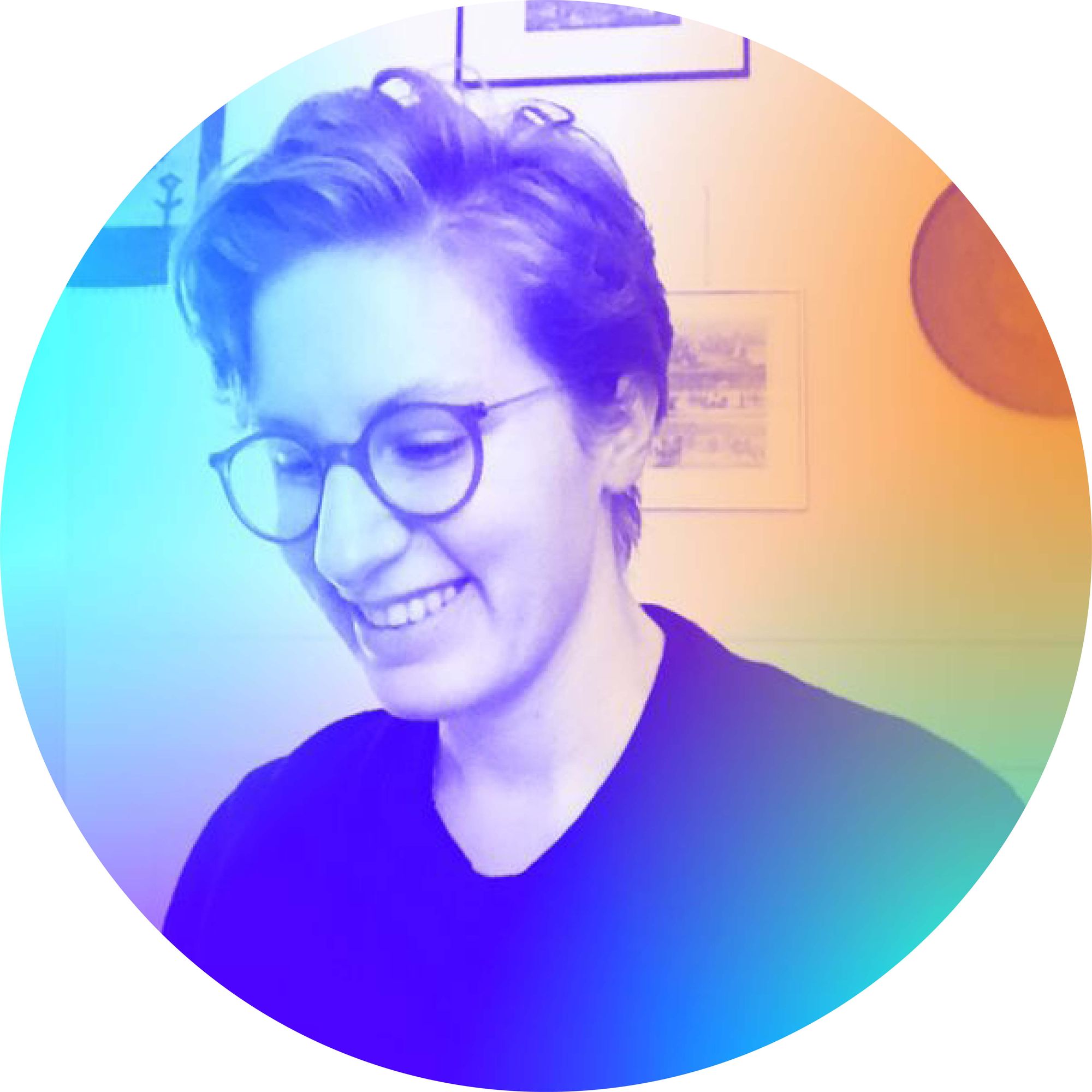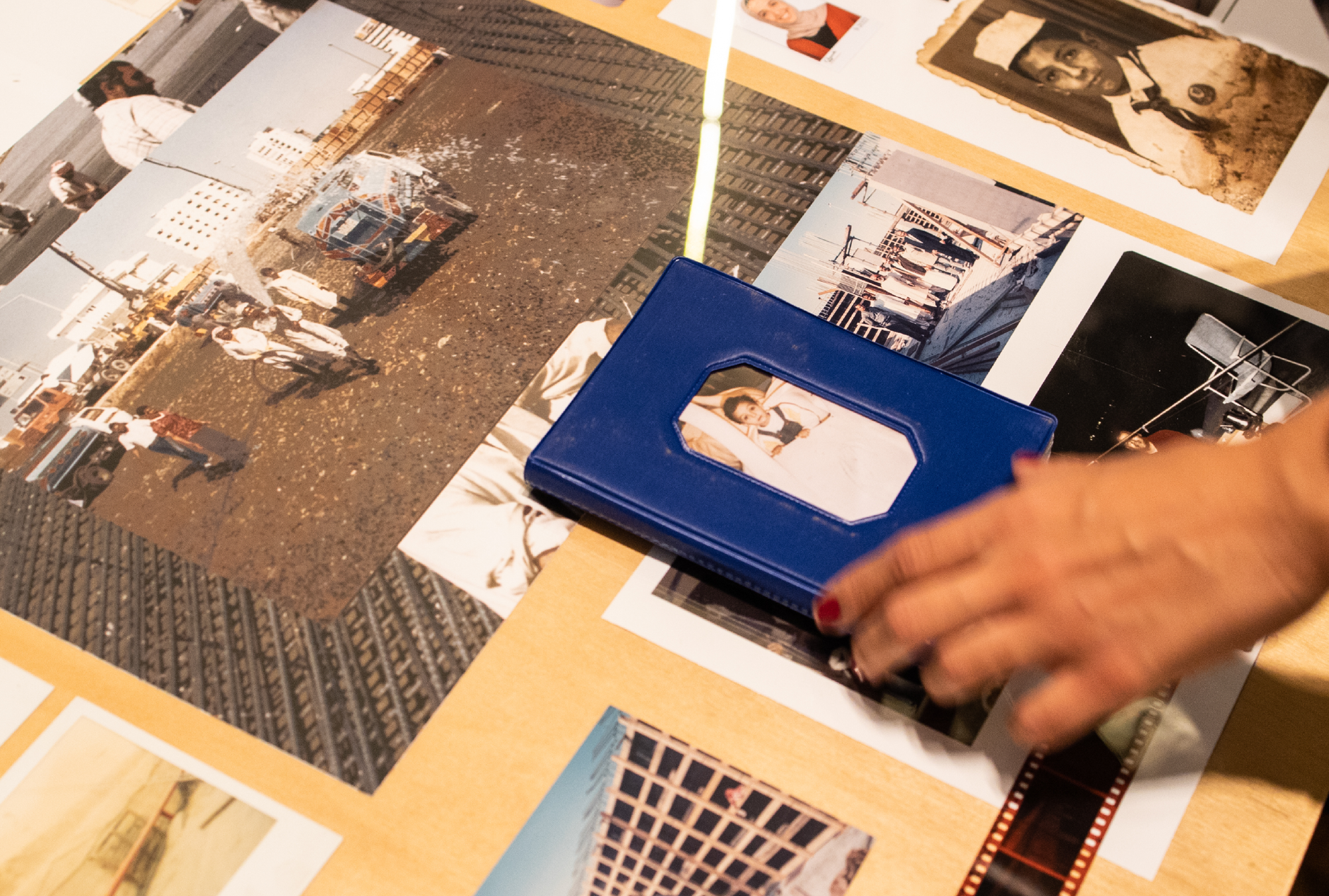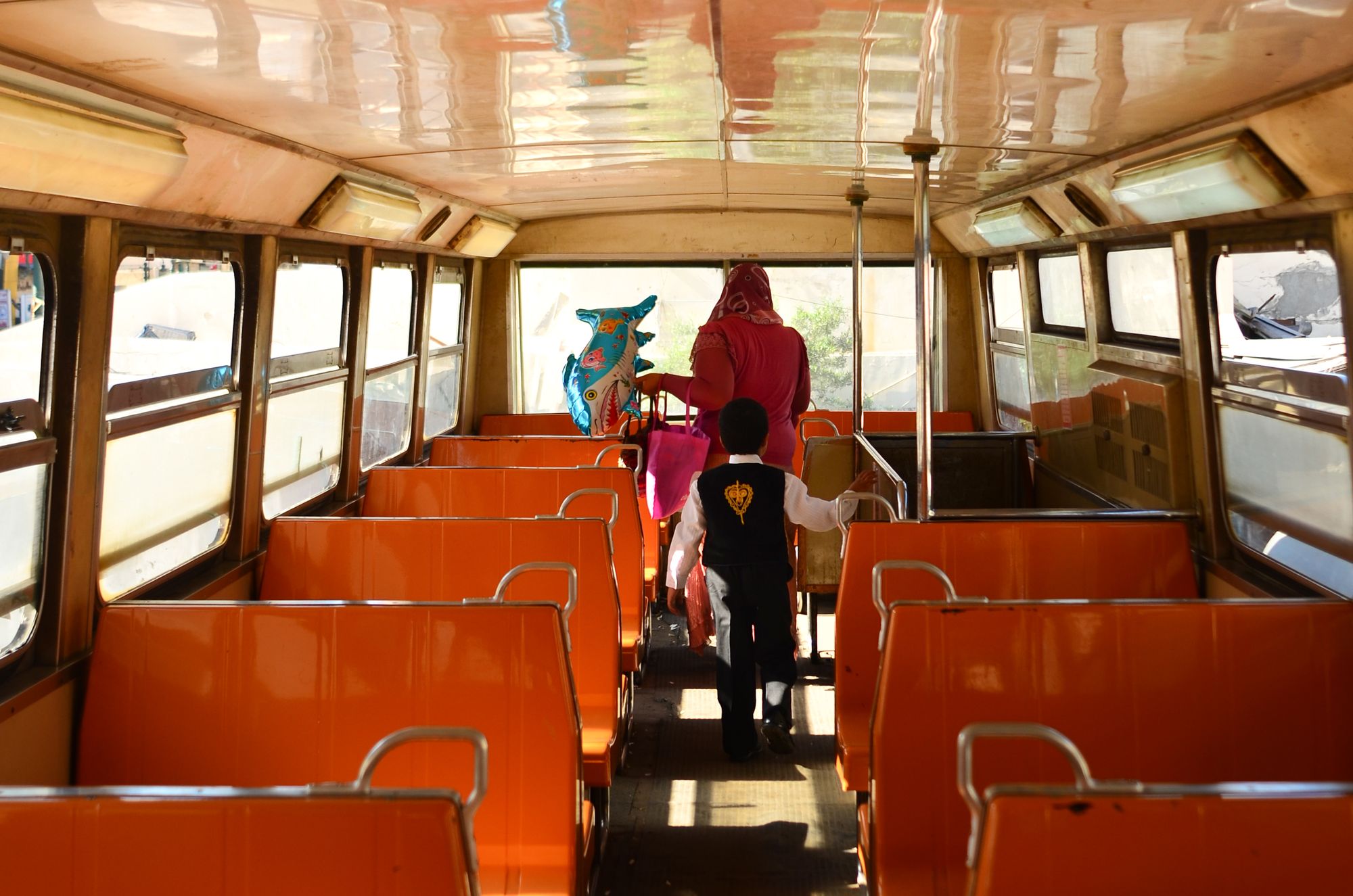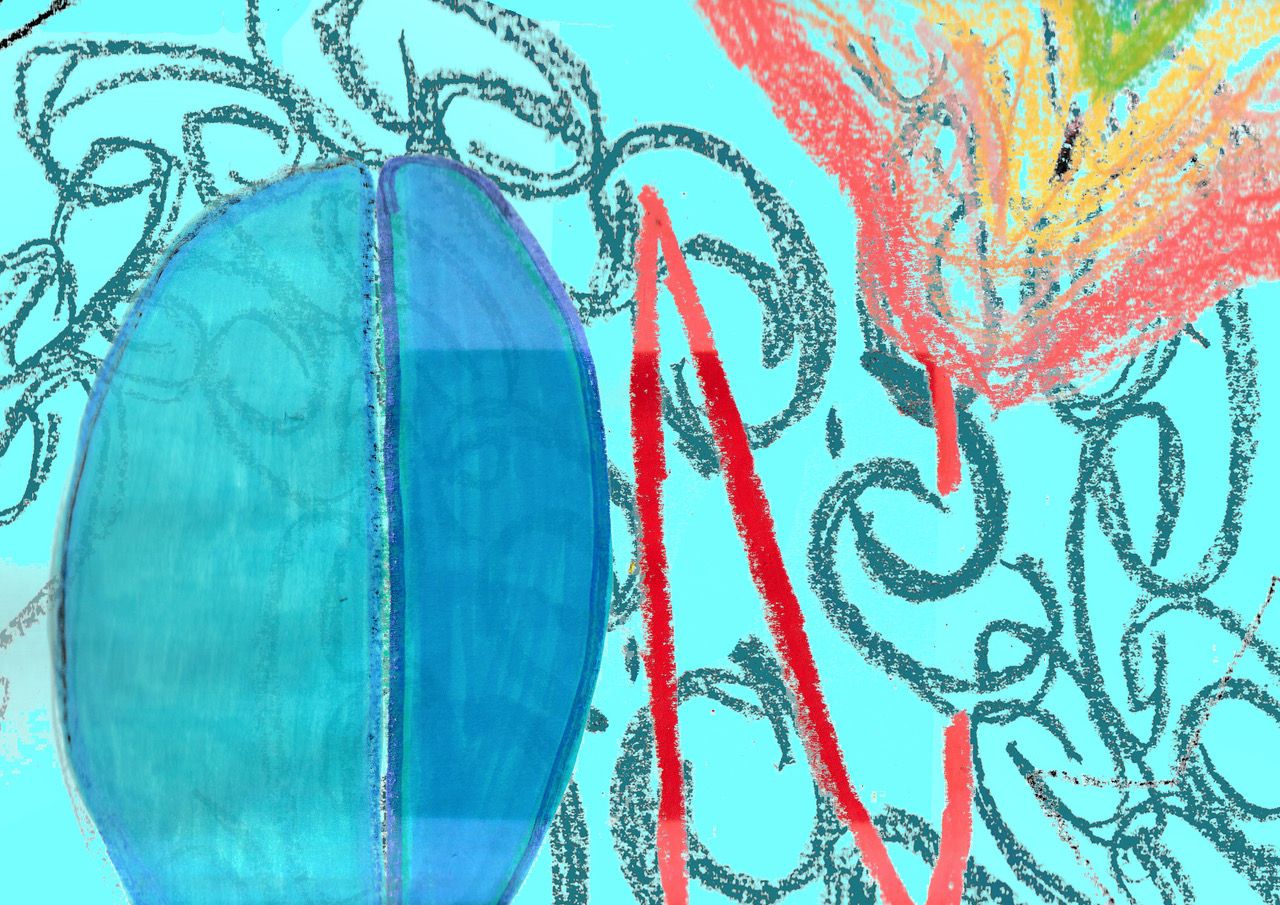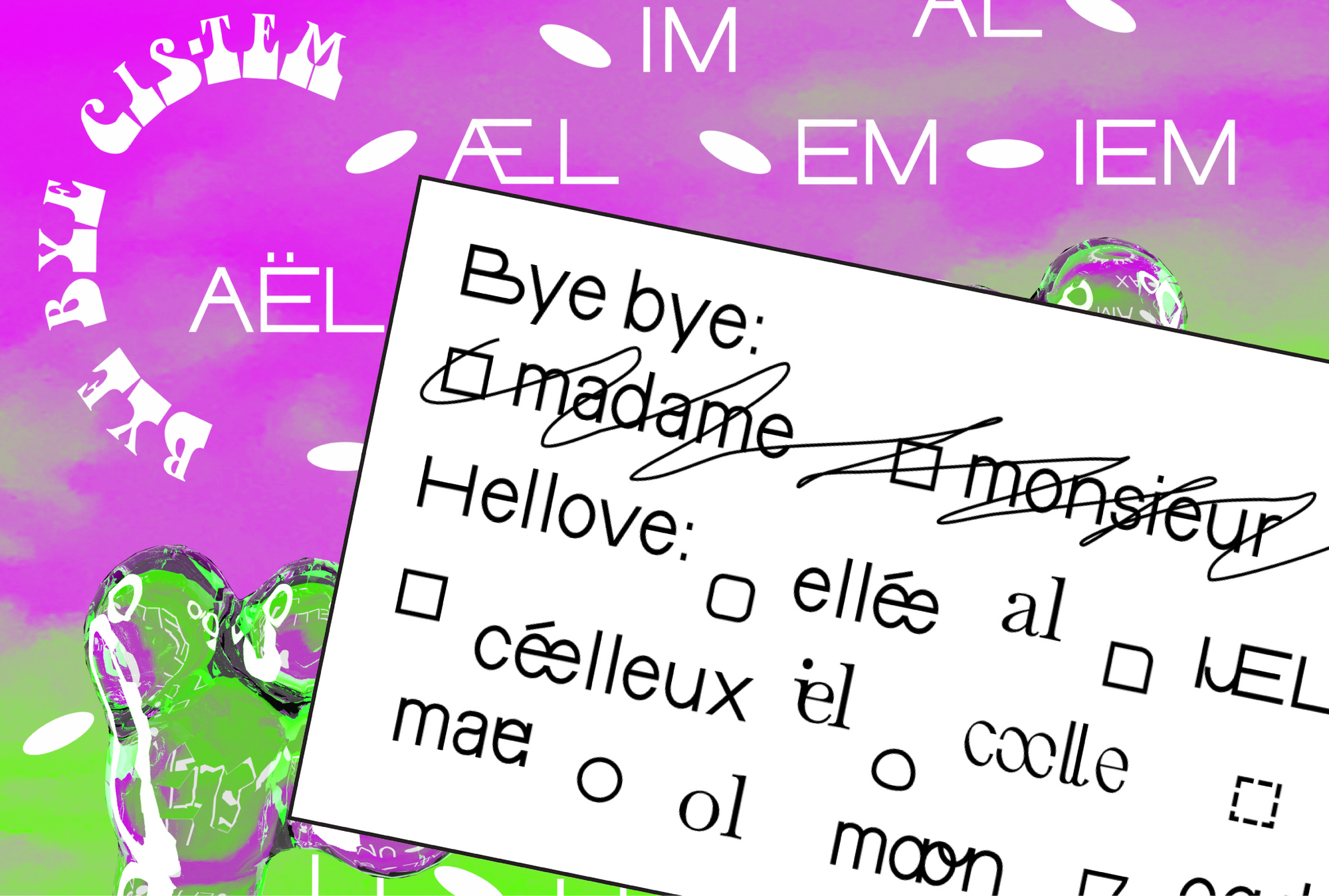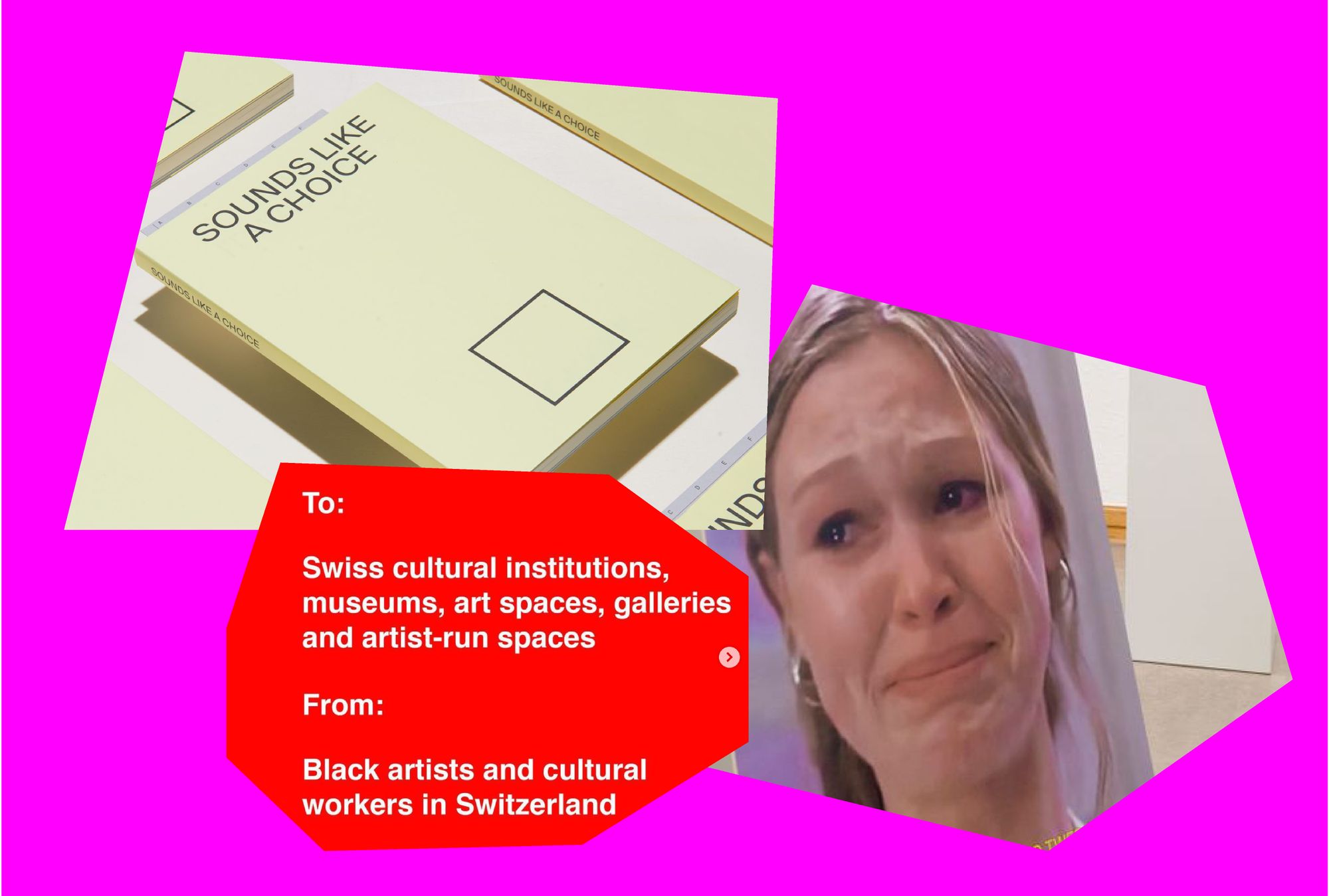
It was at a small bookshop café in the Swiss city of Zurich that I first met Ann Kern. It was early 2018. She grew up nearby, in the German-speaking part of Switzerland, but was at that time studying graphic design in the French-speaking part, at ECAL/University of Art and Design Lausanne. Ann was just embarking on her graduation project and wanted to talk to someone outside of her school. She was full of critical energy and a need to reflect her own experiences.
A few months later, Ann graduated with a project titled Sounds Like a Choice, a publication that started from her own position as a Black woman in Switzerland. It dealt with topics such as intersectionality, privilege—specifically white privilege—, white fragility, and racism. In 2019, the project was exhibited at Helmhaus Museum in Zurich and received a Swiss Design Award.
Since then, I worked with Ann on a couple of projects and we met for coffee whenever time allowed. In September 2020, upon the invitation of the Swiss Design Awards 2020, I met up with her again, to hear what life had been like for her in the last year—a year full of unprecedented and unexpected events.
Corin Gisel: In order to start trying to trace back what has happened during the tumultuous 2020, I thought we could begin by looking back at 2019. What was going on in your life then?
Ann Kern: I finished my studies in 2018, so in the year after I worked a lot. I did some internships, but I also worked on personal projects. It was quite an intense period. And then we actually worked together in the early stages of Futuress, when it was an installation that was being exhibited in Germany and at the Porto Design Biennale. It was also the time when I received a Swiss Design Award for my graduation project. So that was all really exciting. But at the same time, because it was such an intense phase, I began to question certain things. In particular things concerning my future.
It sounds like you had hit a point of exhaustion. How did you cope?
I really did need a break. It’s something that you hear a lot when you start talking to other graphic designers or designers in general. Design is quite an exhausting job. And I see how people sometimes could think of creative jobs as glamorous ones, where all you do is go to exhibition openings, drink white wine and champagne. But it can be tiring, it was for me at least. It really depends on why you’re doing it.
At a certain point, I noticed that the energy I was investing versus what I was getting back from it didn’t add up. It’s time and also soul consuming because you don’t really stop—or at least, you don’t stop thinking about your work.
“At a certain point, I noticed that the energy I was investing versus what I was getting back from it didn’t add up.”
At the beginning of 2020 the pandemic began to spread across the world. Switzerland went into lockdown and put social distancing measures in place. Did that period change your relationship with your job as a designer?
It was obviously a special situation for everyone. Every two or three months I’d go through a phase where I’d be convinced I could never open InDesign again. And then I would start again, because I realized that it’s actually fun and cool. So right before the pandemic hit, I was going through one of my “down” phases with my job and I wasn’t as motivated, even though I did have quite a lot of projects on at the time. However, almost all of it was related to events, which either got postponed or cancelled. At the time, I felt relieved.
I should mention that I was very fortunate because—having won the Swiss Design Award in the year prior—I had some money on the side. That was the moment I realized that not knowing where my future would take me actually felt a lot more calming than the prospect of having to work. That realization made me think a lot. In general, especially at the beginning of the pandemic, I was able to distance myself from the design bubble and ask myself: What do I actually want to do? What are my priorities?
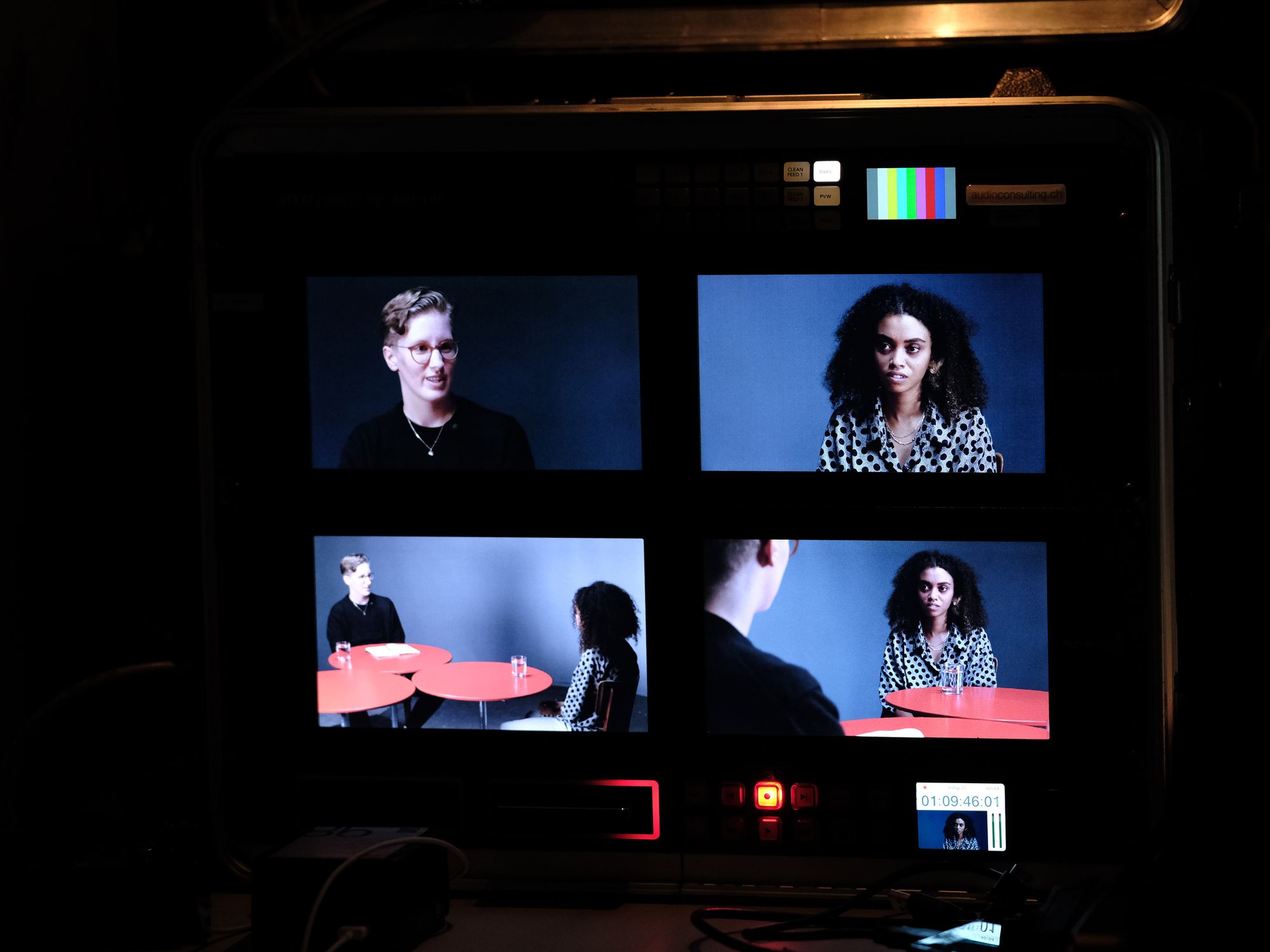
As you mentioned, it is of course a privileged position to be in to be able to even have the time to think. As we all know, the pandemic didn’t stop social inequalities and discrimination. Women were and still are disproportionately disadvantaged, queer people lost their safe spaces, poor and homeless people were even more disenfranchised, elderly and immunocompromised people were more at risk, and racism and violence against people of color still continued. We all witnessed the Black Lives Matter protests that followed the murders of George Floyd, Ahmaud Arbery, Breonna Taylor, Tony McDade, and many more people of color that were killed by the police before and since. Related to these events was also what is now known as “Blackout Tuesday” on social media, where private individuals and institutions posted black squares on Instagram as messages of solidarity with people of color and as symbols against racism. I know from previous conversations with you that that was a strange moment for you.
It was a very strange Tuesday. Instagram was suddenly filled with information about racism. I opened up my Instagram and the first couple of black squares I saw were posted by people I knew who had acted differently in real life than what they were now portraying on social media. It was people who, for instance, were with me when I experienced discrimination and didn’t defend me. I was really angry and also frustrated. People felt that they had to turn into an expert overnight, although that’s not the point.
What really gets me is the audacity to turn white saviorism into white fragility really quickly. Also, the fact that people thought of it as an American problem was really problematic. There are a lot of issues we can discuss here in Switzerland. It’s too easy to just point at others. It was a weird time. I had to take some time off Instagram to focus on other things, which felt good.
“I opened up my Instagram and the first couple of black squares I saw were posted by people I knew who had acted differently in real life than what they were now portraying on social media.”
Talking about “Blackout Tuesday” here in Switzerland, you ended up being a co-signer of an open letter by Black cultural workers and artists in Switzerland. Could you tell us about how that came about?
It was a reaction to institutions that posted a black square on their social media platforms that day. If you pretend to care, we want to see action. Now is the time to prove it and rethink your institution, rethink your own behavior, because it’s an un-learning process. Just talking about it won’t change anything.
For many institutions, posting the squares was more about showing the world that they cared rather than actually caring. When confronted with criticism coming from people who actually experience racism and discrimination, the institutions often got very defensive.
As an example, I was asked during that time by a Swiss magazine to publish my work. The deadline was tight and I wasn’t too comfortable with that, but I thought I would go along with it anyway. In the end, it turned out that the magazine wanted to present my work in their particular way, which I didn’t agree with. So I said I didn’t want to do it anymore, which led to an extremely patronizing email, telling me how I was supposed to present my work. I learned to say “no.” It’s okay to say “no” if you don’t think something feels right.
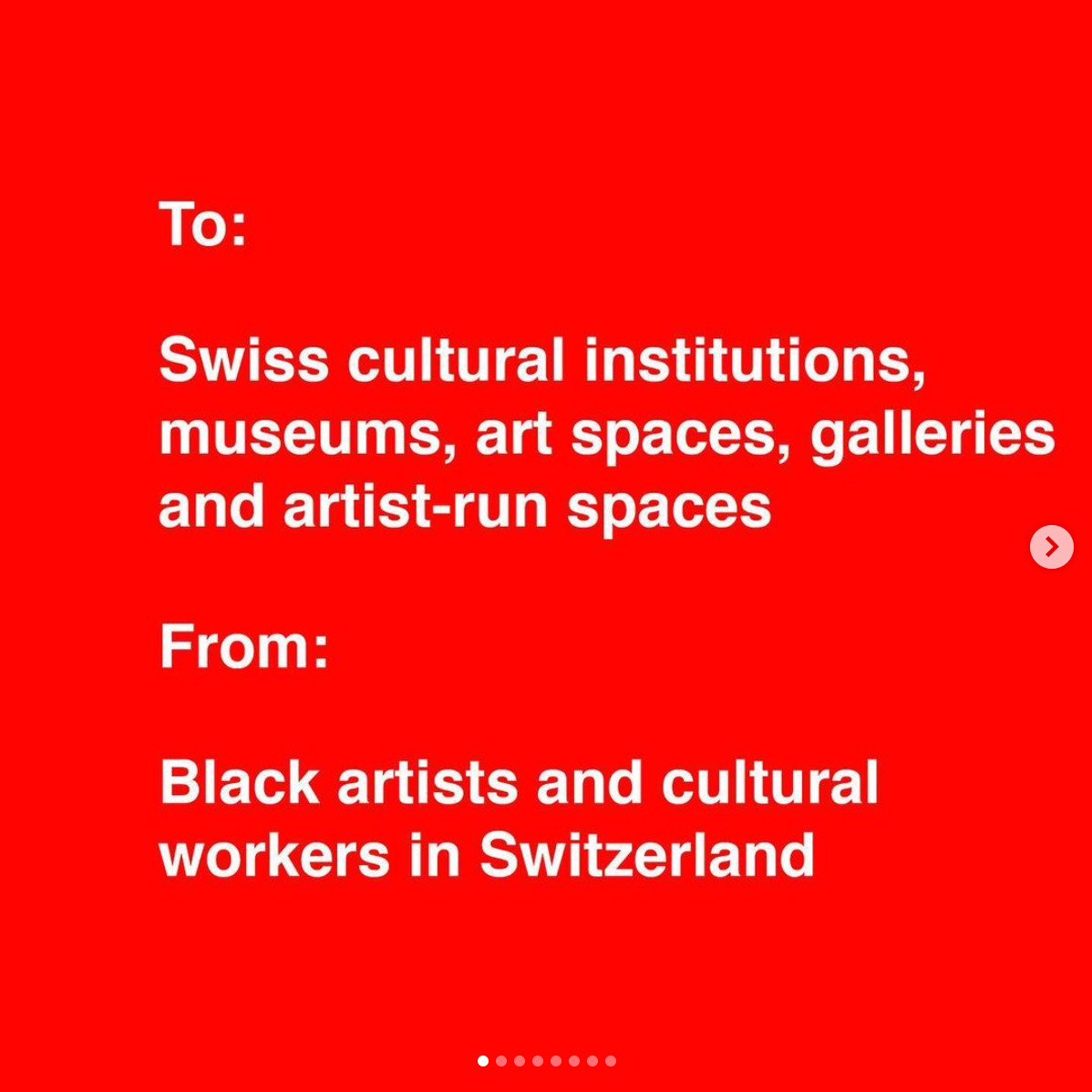
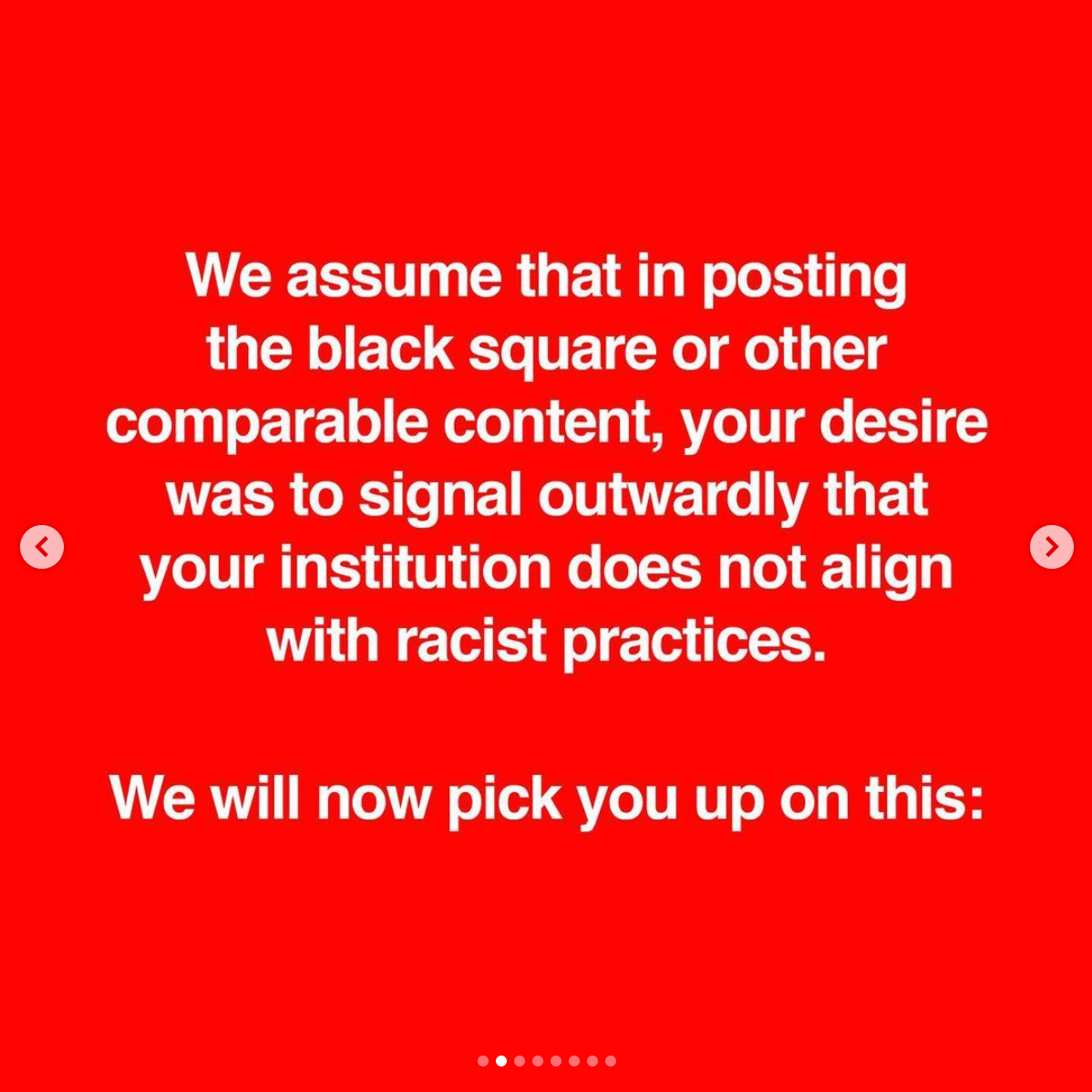
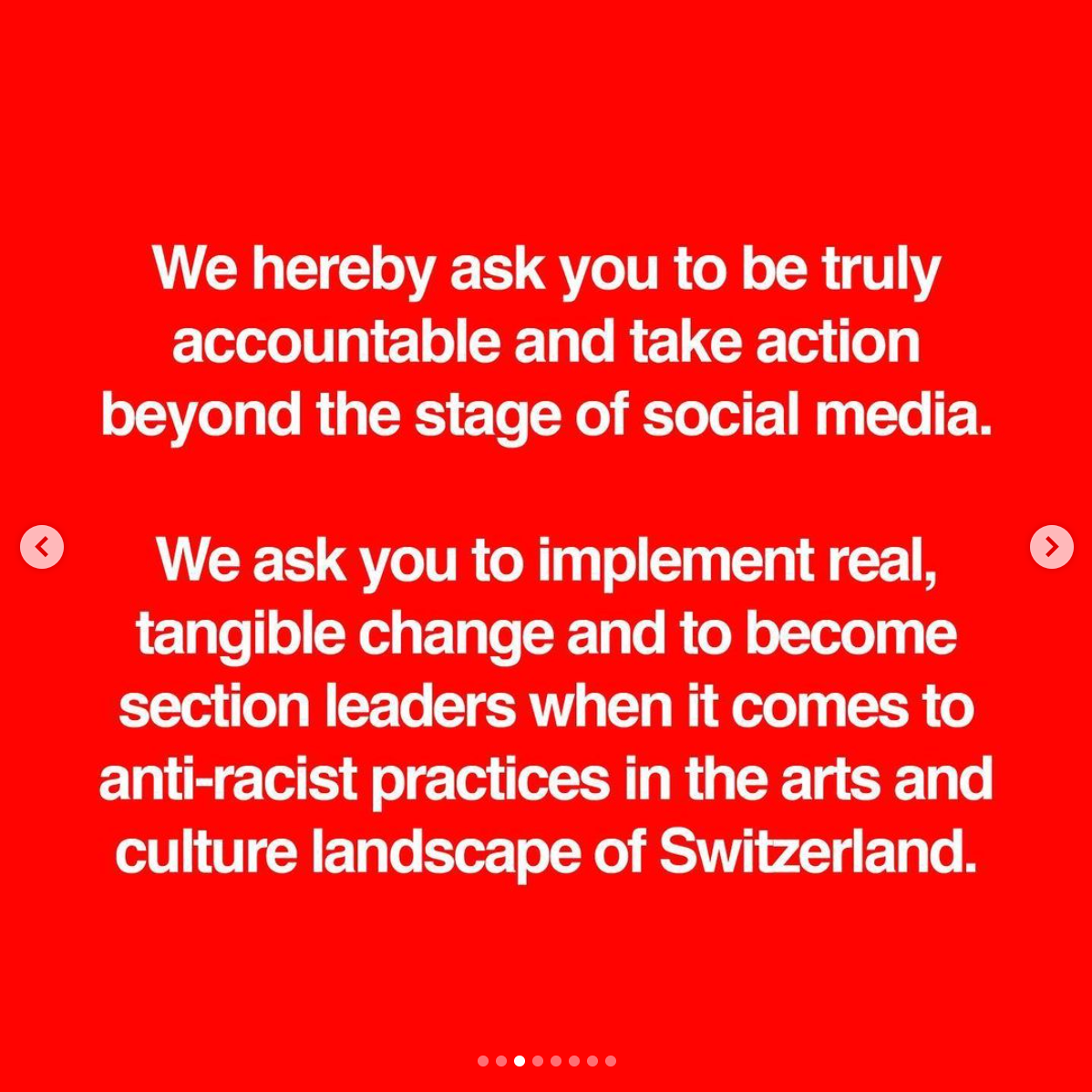
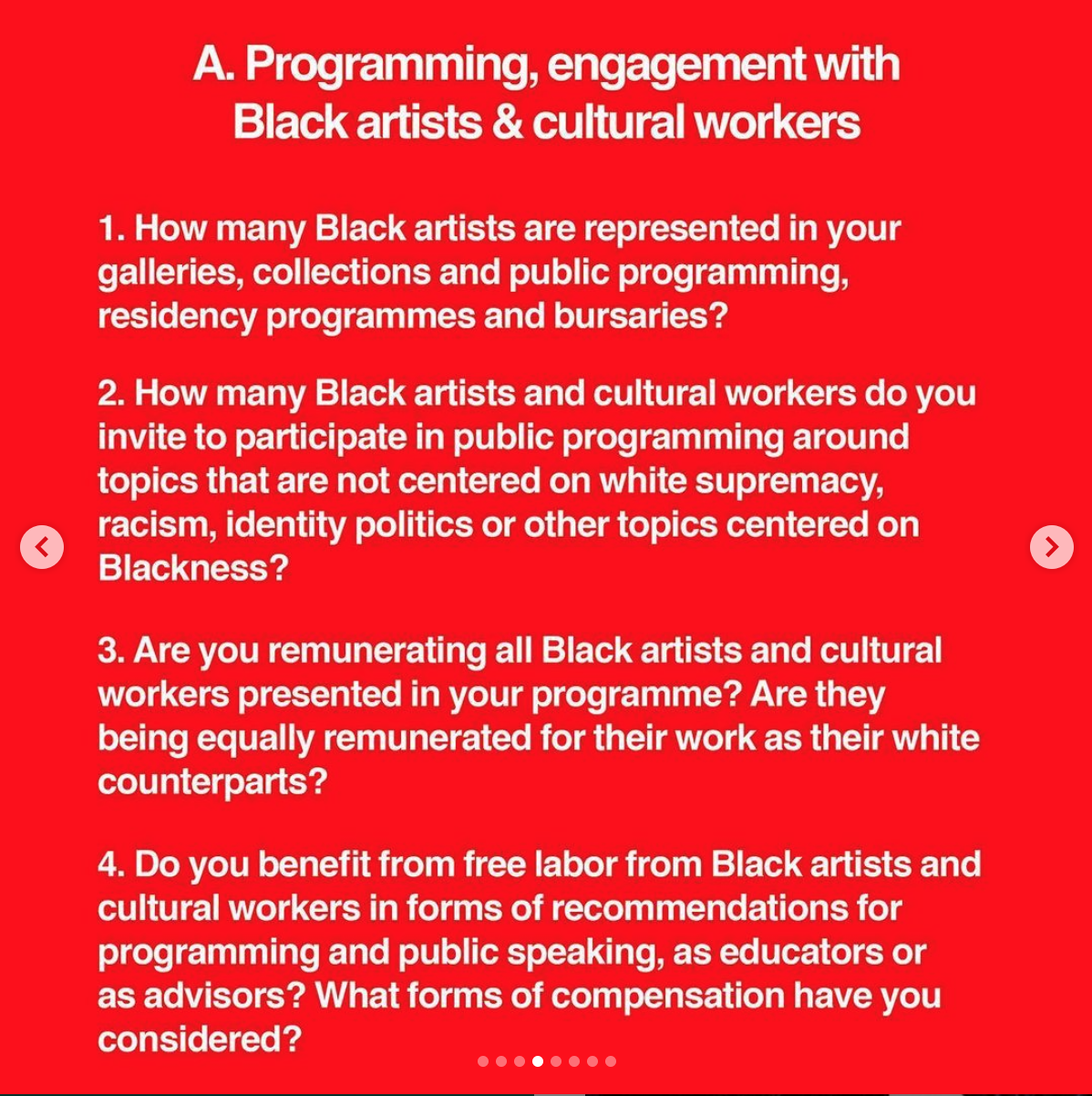
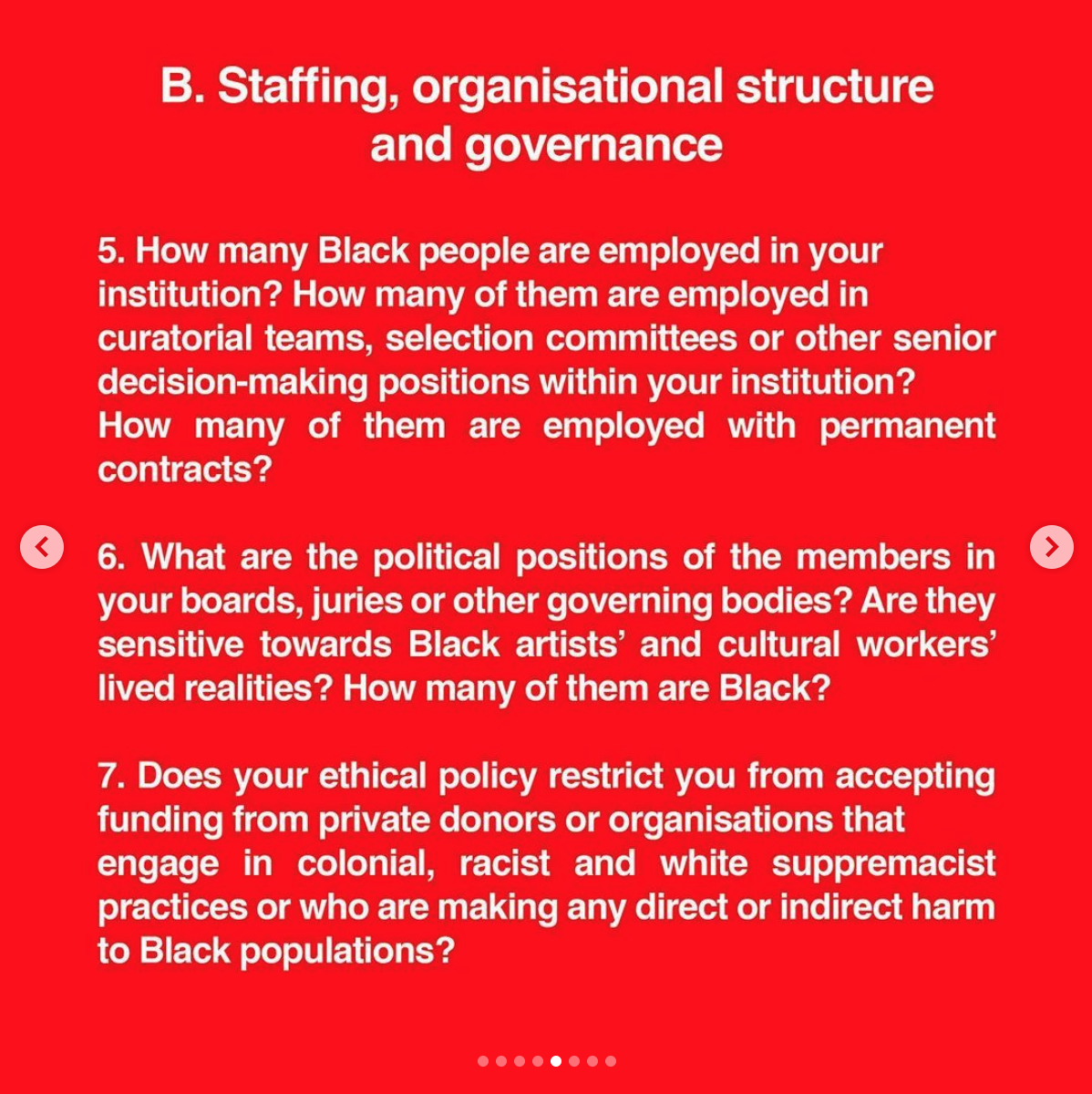
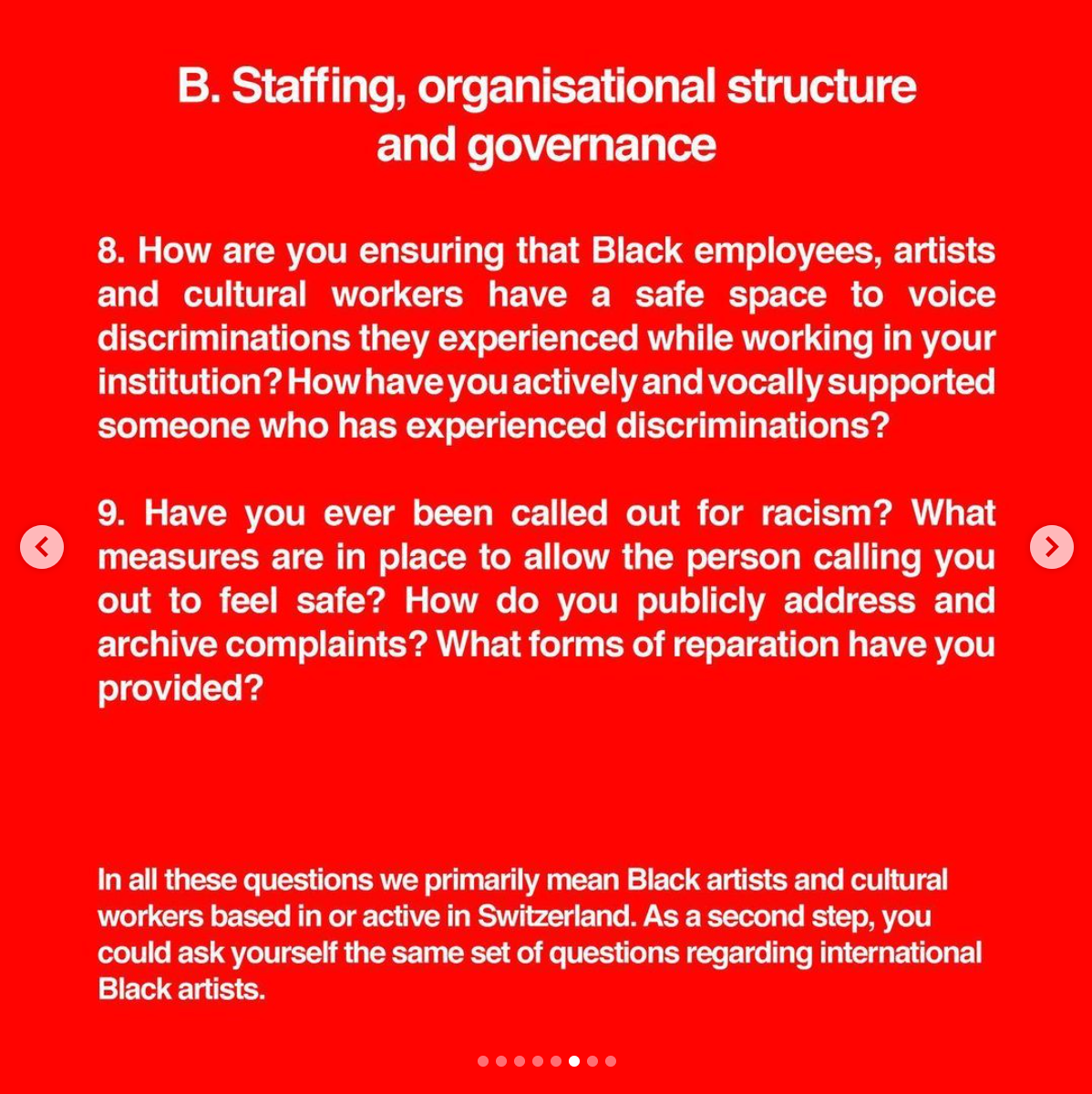
This example touches upon the question of representation. On one hand, here you are again, a Black woman talking about these issues. On the other hand, your work is political and the project you were awarded for took a political stance. I also do a lot of political work and it’s very connected to my personal life and my identity as a queer and trans person. It creates a strange dilemma. In a way, you want to do the work. You want to take that space that is given to you, and you want to talk about these issues that not enough people are talking about. But at the same time, it’s really emotionally taxing. And sometimes you feel strange that you are the one being asked to talk about these topics, when there are so many others. How do you feel about this question of representation and how do you navigate it?
As you say, it’s a weird feeling. One moment I was just sat there at school doing my bachelor project, following my own interests. And next thing I know, I kind of became the “Black graphic designer,” the one with the memes [in reference to my project Sounds Like a Choice]. It’s weird to be put in a specific box with people labeling you. Sometimes I even feel a bit ungrateful for feeling this way. I mean, I am grateful for the opportunities, but it’s not always super nice and exciting.
Especially since finishing school I’ve learned to really start asking myself: “What is it that I want to do? What do I want to stand for?” And I mean this in terms of design, but also beyond it. I think I’m still finding my own way and that’s okay. It’s okay to not yet know exactly what you’re going to do. As long as you keep moving.
Going back to the Black Lives Matter movement, I have to say that I found it uplifting to see groups form and people beginning to find their voice here in Switzerland. What I’m trying to say is: Good things happened during that time. Many people who share the same frustrations came together.
I guess sometimes a kind of burst is needed to propel people to move forward. Still, we have to acknowledge that this is activist work people like you have been doing long before the protests, especially if it’s linked to your lived experience.
Yeah, that’s what I told myself too. I had these moments of thinking: “good for you people, you realize that racism actually exists. It’s a bit late, but at least something’s happening now. People have been talking about this for ages, you just didn’t listen until now…”

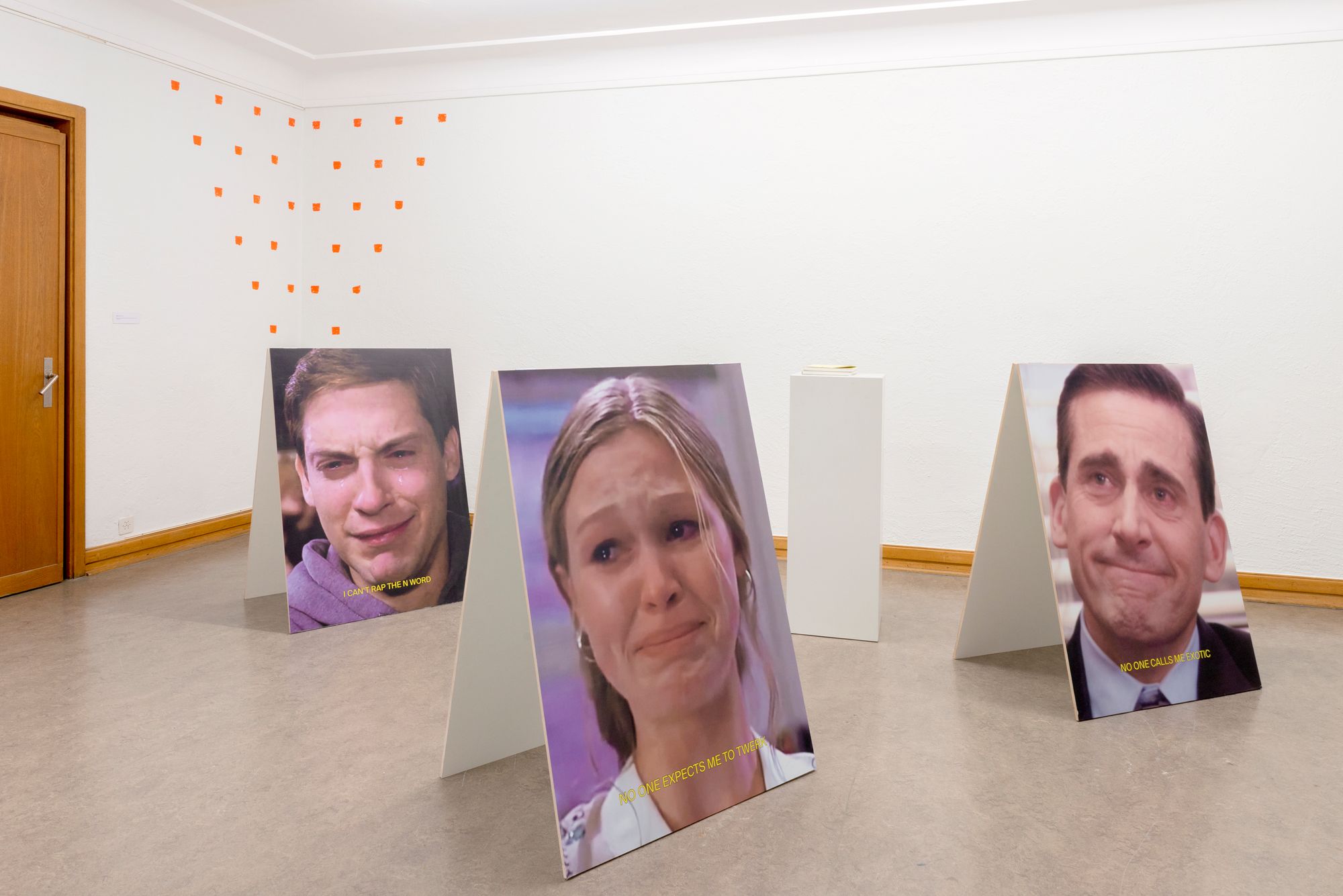
Before all of this started, you already were in a phase of thinking about what kind of designer you wanted to be, and what kind of projects you wanted to take on. Has there been a shift in your thinking about what kind of design projects you want to do since then? Maybe we don’t even need to use the label “design...”
Where I’ve shifted my opinion the most, is probably around this concept of “failure is not an option.” First of all: What is a failure? To me, it’s become more about realizing that failure is allowed. It’s about allowing myself to fail, or even just distancing myself from something in order to find my own path. I noticed that when I was stressed, it often had to do with other people’s idea of success and less with what I actually wanted to do.
“I noticed that when I was stressed, it often had to do with other people’s idea of success and less with what I actually wanted to do.”
This “failure is not an option” kind of mentality is in a way linked to your time as a student, as I understand. How did you experience that pressure while you were studying?
At the very beginning of my academic career, I had no idea about visual communication or graphic design. I just thought of it as an interesting, broad, and creative field. At first I was very, very impressed by many things I saw. And then—as time went by—I saw behind the facade and the magic kind of disappeared for me. I’m not saying every student feels this way, but for me it was like that.
This might be a provocative question: Do you sometimes regret having studied design?
No, I don’t regret it. I’ve learned a lot. I’ve gotten to know many interesting people. I now see design more as a tool. Sometimes my thoughts can be a bit of a mess in my head, and having design as a tool really helps me to organize and better comprehend my thoughts.
I don’t think that I will stop working in the design world. However, I’m still not sure where exactly my place in design is. But that fact doesn’t stress me out too much at the moment. A lot of new things are happening and it feels good. So I don’t regret it.
“…I’m still not sure where exactly my place in design is. But that fact doesn’t stress me out too much at the moment.”
Has your focus in design now shifted? Do you see design more broadly, almost as a mediating practice instead of a practice focused largely on the visual layer of things?
I try to focus on not defining too much what kind of design I’m actually doing. In the design world—or “bubble”—there is a lot of elitism and other problems. So I try to not compare what I am doing to the rest of the bubble. Basically, I just don’t think about it too much and I try to carve out my own path. I mean, this year has been wild! I think many people feel the same. It’s about staying flexible and not being afraid to change plans.
Eliot C. Gisel (they/them) is a is a Swiss journalist, editor, and researcher. With a background of being a design practitioner themselves, their writing has explored topics such as design education, dress culture, the digital turn in museums, city politics, visual rhetorics of resistance, and—for even more personal ones—LGBTQIA+ activism, culture, and the politics of language.
An earlier version of this interview was also published in the accompanying publication of the 2020 Swiss Design Awards, titled Failure Is Not an Option 2020 Swiss Design Awards titled Failure Is Not an Option.

